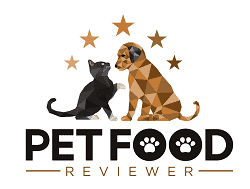What Are Natural Flavors?
The AAFCO defines Natural Flavors as “Materials treated with heat, enzymes and/or acids to form concentrated natural flavors”. They also state that this material must be sourced from an organic source such as a plant or animal and therefore can not be artificially created.
However, this vague definition doesn’t specify which plants or animals can be used to produce Natural Flavors, which can make the ingredient incredibly unreliable and ensure it lacks transparency.
One common example of a Natural Flavor is Animal Digest, which is a highly processed form of animal tissue that is “digested” to break them down in a similar way that a digestive system would.
This form of flavor is highly popular with Purina, and several of their brands utilize this ingredient. You can learn more about Animal Digest in our dedicated article Animal Digest In Dog Food.
While Purina is more clear about this by using the phrase Animal Digest, other brands avoid this and prefer to use Natural Flavor as it sounds more appealing and less unappealing to consumers.
Why Are Natural Flavors In Pet Food
Natural Flavors are present in pet food recipes to improve their palatability and taste and to make them more enticing to dogs and cats.
While many pet food recipes will be naturally palatable thanks to their high-quality meat and fish ingredients, others are less appealing, and these Natural Flavors help bridge this gap to ensure the food is still desired.
Larger pet food brands usually undertake large-scale feeding trials where they test slightly different formulations of food to see which is the most appealing. It is likely that at this stage in the formulation, various Natural Flavors are tested to see which is the most successful.
While some claim that it is the case, it is very unlikely that any pet food brands include Natural Flavors in their recipes in order to provide any noticeable levels of nutrition, such as protein or fat.
Are Natural Flavors Bad For Pets?
The problem with Natural Flavors is that they are extremely vague and unaccountable, and each pet food brand likely uses different mixes of ingredients and foods to produce these flavors.
While most of the constituents are innocent, this does increase the risk of an allergic or adverse reaction to an ingredient that you didn’t even realize was present in the recipe.
However, there are some brands that do produce some transparency around their flavors, and instead of listing them as Natural Flavors, they use terms like Chicken Flavor or Beef Flavor.
You can see an example of this below in the ingredient list of Wellness’ Core grain-free original recipe.
Here you can see a portion of Natural Chicken Flavor which is present in a small portion.
This approach is much preferred by those within the industry as this allows any pet owners looking to avoid certain meats or ingredients the ability to do so very easily.
Given that Natural Flavors are incredibly vague and pet food brands can build them from almost anything, we can’t rule out any other adverse effects, but we will note that very few pets experience serious issues outside of specific allergic reactions.
Pet Food Brands That Use Natural Flavors
While most do not realize it, Natural Flavors are present in a huge portion of commercially produced pet food recipes, including from several high-profile brands.
Well-known examples of pet food brands that use Natural Flavors include Purina Pro Plan, American Journey, Pedigree, Hill’s Science Diet, Taste of the Wild, Blue Buffalo, Iams, and Rachael Ray Nutrish.
A clear example of this is within the ingredient list of Taste of the Wild’s High Prairie dry dog food recipe, which is one of their most popular.
As you can see, Natural Flavor is present in a notable portion size alongside other minor ingredients like Tomato Pomace, Potato Protein, and Pea Protein.
Given the portion size present, it is likely that this Natural Flavor is some kind of animal-based product, such as Animal Digest.
If you are looking to avoid feeding your pet Natural Flavors or Animal Digest, we recommend closely studying the ingredient list of any pet food recipe you are considering. If possible, try to find a recipe without Natural Flavors or one that uses named flavors such as Chicken Flavors.
If you need help finding a high-quality pet food recipe, we recommend checking out our Pet Food Brand Review Index for the full list of brands we’ve analyzed.




